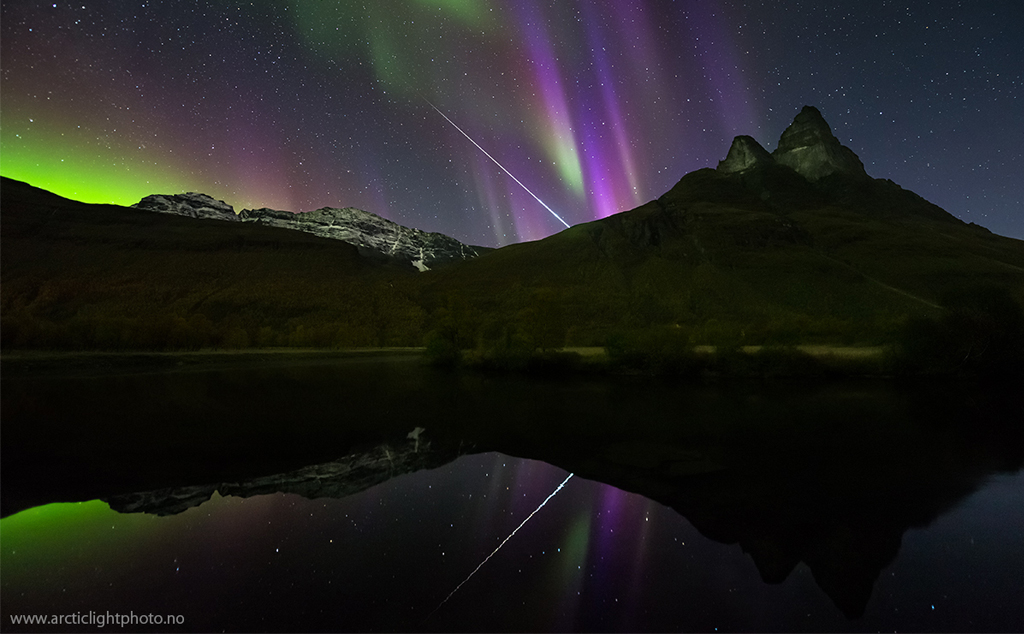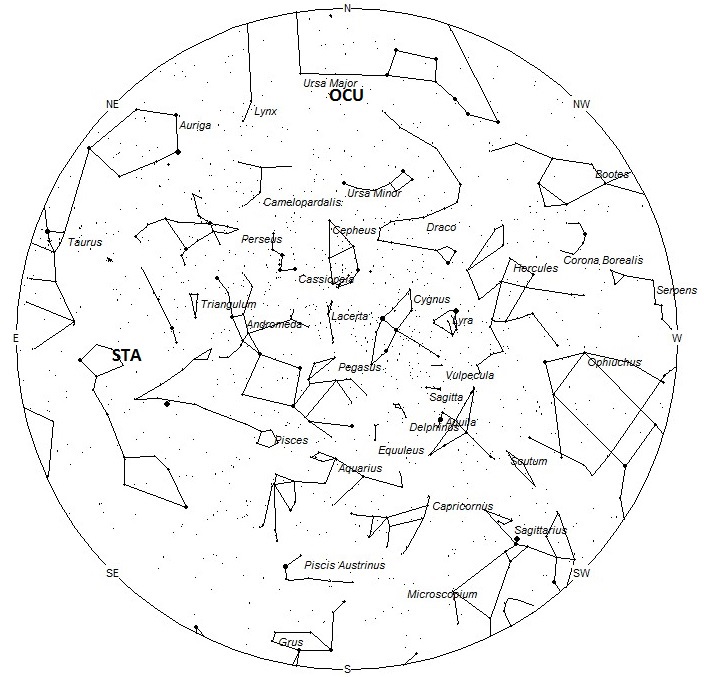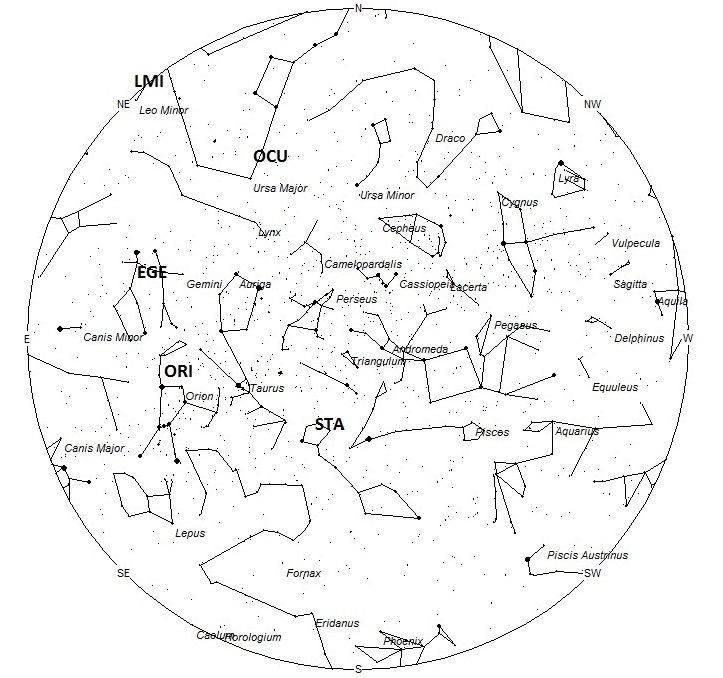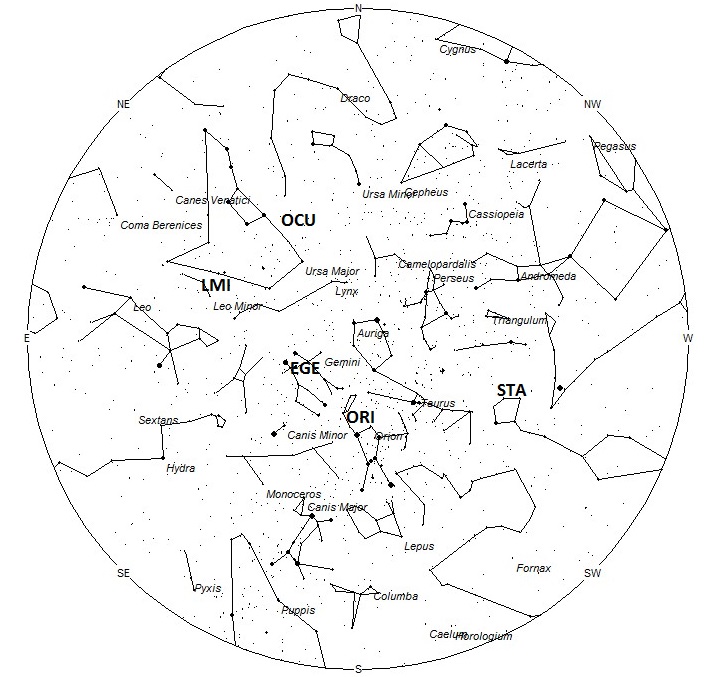
During this period the moon reaches it full phase on Saturday October 15th. At this time the moon will be located opposite the sun and will be in the sky all night long. This is the worst time of the month in which to try and view meteor activity as the bright moon will obscure all but the brightest meteors. Toward the end of this period the early evening hours will be free of moonlight but meteor activity will be low at that time. The estimated total hourly meteor rates for evening observers this week is near 3 as seen from mid-northern latitudes (45N) and 2 as seen from tropical southern locations (25S). For morning observers the estimated total hourly rates should be near 10 as seen from mid-northern latitudes (45N) and 8 as seen from tropical southern locations (25S). The actual rates will also depend on factors such as personal light and motion perception, local weather conditions, alertness and experience in watching meteor activity. Rates are reduced this week due to moonlight. Note that the hourly rates listed below are estimates as viewed from dark sky sites away from urban light sources. Observers viewing from urban areas will see less activity as only the brightest meteors will be visible from such locations.
The radiant (the area of the sky where meteors appear to shoot from) positions and rates listed below are exact for Saturday night/Sunday morning October 15/16. These positions do not change greatly day to day so the listed coordinates may be used during this entire period. Most star atlases (available at science stores and planetariums) will provide maps with grid lines of the celestial coordinates so that you may find out exactly where these positions are located in the sky. A planisphere or computer planetarium program is also useful in showing the sky at any time of night on any date of the year. Activity from each radiant is best seen when it is positioned highest in the sky, either due north or south along the meridian, depending on your latitude. It must be remembered that meteor activity is rarely seen at the radiant position. Rather they shoot outwards from the radiant so it is best to center your field of view so that the radiant lies at the edge and not the center. Viewing there will allow you to easily trace the path of each meteor back to the radiant (if it is a shower member) or in another direction if it is a sporadic. Meteor activity is not seen from radiants that are located below the horizon. The positions below are listed in a west to east manner in order of right ascension (celestial longitude). The positions listed first are located further west therefore are accessible earlier in the night while those listed further down the list rise later in the night.
These sources of meteoric activity are expected to be active this week.
Details on each source will continue next week when viewing conditions are more favorable.
| SHOWER | DATE OF MAXIMUM ACTIVITY | CELESTIAL POSITION | ENTRY VELOCITY | CULMINATION | HOURLY RATE | CLASS |
| RA (RA in Deg.) DEC | Km/Sec | Local Daylight Saving Time | North-South | |||
| Southern Taurids (STA) | Oct 10 | 02:28 (037) +10 | 29 | 02:00 | 2 – 2 | II |
| Orionids (ORI) | Oct 22 | 05:48 (092) +15 | 67 | 05:00 | 3 – 3 | I |
| Epsilon Geminids (EGE) | Oct 11 | 07:10 (108) +28 | 70 | 06:00 | <1 – <1 | II |
| October Ursa Majorids (OCU) | Oct 15 | 09:44 (146) +63 | 52 | 08:00 | <1 – <1 | IV |
| Leonis Minorids (LMI) | Oct 22 | 10:20 (155) +38 | 60 | 09:00 | <1 – <1 | II |
 American Meteor Society
American Meteor Society



Was driving NE on US-15 (N. Va.) between Culpeper and Warrenton and saw fireball at 8:49pm. Appeared to disintegrate and reaching peak brightness. More diffuse flatter trail extended away from me toward NE. No sounds heard.
I saw the same! At that very same time I was driving on the NE extension of the PA Turnpike, southbound near Hickory Run State Park, and saw it as well. Very bright – it was breathtaking! I thought it was the brightest “falling star” I had ever seen. I’m a complete novice so now I will be looking up fireballs!
I just saw a really bright meteor.
On October 15, 2016, I was driving south on 77 between Refugio, Tx to Corpus area and I saw a green fireball fall down in the distance. I had just woken up a few minutes before to take over driving. At first I thought it was a green firework popping over a distant field. But it fell at a straight angle and got more intense green with a green trail and vanished before it hit the ground. Fell over area west of 77. It must have been around 3-4 am. Sorry I am so vague, was tired and kind of in disbelief of seeing a meteor. It was amazing. I just remembered today to look up information about meteor showers.